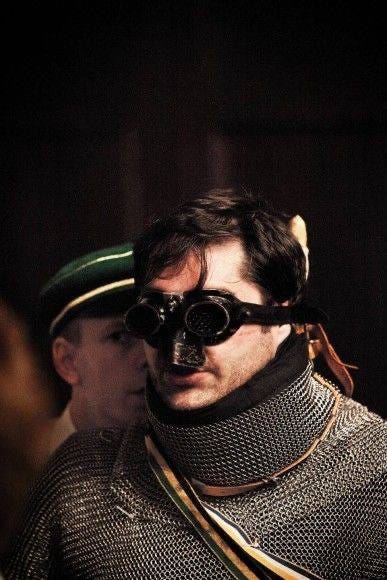Today we deviate from our normal content for something rather interesting. Some of you may have seen these images of Mensur fencers from Germany and their famous scars (Schmiss), but they are often looked over entirely or misunderstood. We put this together to give a quick sense of what exactly these “dueling scars” in old imagery actually come from.
The Studentenverbindung (Student fraternities) were formed in the German-speaking sphere and rose to their height in the mid to late 1800s. These fraternities emphasized the preservation of tradition, life long brotherhood, and the masculine art of self discipline.
Their colors and garbs are characteristics which mark different groups,

and there are many interesting artifacts, but perhaps nothing as interesting as the swords of the Mensur, which match the various guard and blade types of modern french fencing, which I may delve into another time.
it is in these societies that the Mensur competition emerged. The Mensur itself is not a duel. It is not necessarily even a competition. It is a mark of self control. The participants stand at equal striking distance and attack without moving forward or backwards, unlike regular fencing, often cutting one-another’s faces to ribbons with only eye goggles for protection. It ends only when the participants call “satisfaction.”
The scars resulting from such shows of courage (Schmiss, or smites) were extremely fashionable in the late 19th and early 20th centuries. One may often see old images of German officers and such sporting prominent cheek scars (in fact, my own great-grandfather was from Bremen and participated, his glass stein notched with marks of his bouts is perhaps my most prized possession). The Schmiss was so held as a mark of courage and prestige that it was oft-jested to be the beginning of a man’s bachelorhood when he gained his first, without which he would be unable to even attempt to approach a woman with any chances. Today the scars are a thing of the past thanks to antiseptic, though the Mensur does still go on, as do these societies, though they are much smaller and more private now.

In fact, their all-male, tradition focused, Vaterland-loving practices have brought them under intense scrutiny. In Austria, many conservative politicians are still members of these private societies. (https://pbs.twimg.com/media/FpDN-o1akAAwdfQ.jpg)
Despite decline in numbers however, the Mensur, and the Burschenschaft societies live on.
As a note due to the nature of this page, most Catholic student societies banned the Mensur due to its similarity to the traditional sword duel’s propensity for violence without just cause however and are usually classified as “non-striking.”
We hope you found this content helpful in understanding the often misunderstood but also often seen (in historical German studies) Mensur scar of yore.
Sources:
https://de.wikipedia.org/wiki/Burschenschaft?wprov=sfti1
https://de.wikipedia.org/wiki/Mensur_(Studentenverbindung)
https://de.m.wikipedia.org/wiki/Schmiss





